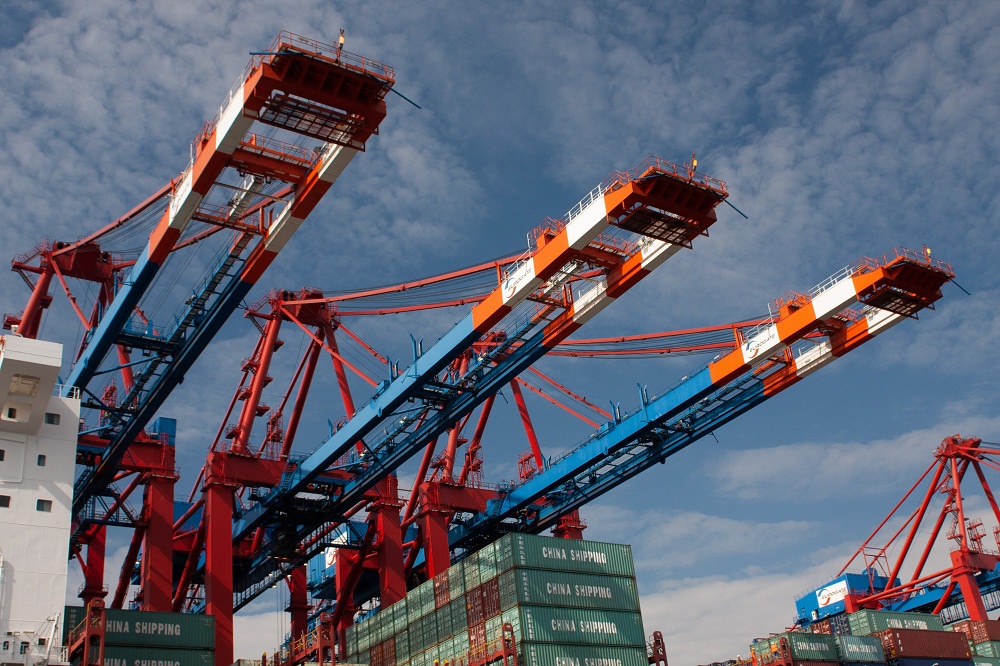The global economy appears ready for a strong rebound from the Covid-19 pandemic. Shipments from China, the world’s top exporter, increased a whopping 60.6% year-on-year to $468.9 billion over the first two months of 2021, according to Trade Data Monitor, the world’s premier source of trade numbers.
China’s strong bounce-back cements its path toward owning the world’s largest gross domestic product before 2030, and confirms the emergence of a 21st century economy dominated by three large blocs: China, and its two trop trading partners, the U.S. and the European Union.
In the first two months of 2021, Chinese exports to the U.S. totaled $80.5 billion, up 87.3% year-on-year, and those to the EU rose 62.6% to $73.7 billion. By comparison, exports to all of Latin America totaled $31.2 billion; to Japan, $25.2 billion; to all of Africa, $20.7 billion; and to India, $14.2 billion.
China was the first country to shut down because of Covid-19, but also, by far, the first to reopen. For the year , China registered 2.3% GDP growth, making it the only major economy to expand in 2020.
The Covid-19 pandemic and its reshaping the global economy as a work-from-home world with rising demands in communications technology has confirmed that the U.S. and EU are still the world’s richest markets– 800 million consumers hungry for all the good China-based factories are pumping out, from computers and phones to shoes and toys, and able to pay for them.
China’s export numbers in the first two months of 2021 were roughly twice the jump expected by economists, and up from a 18.1% year-on-year increased in December. Imports leapt 22.2% to $365.6 billion, over a 6.5% increase in December. The first two months of the year are combined by Beijing in order to compensate for distortions caused by the Chinese Lunar New Year falling at different times in January or February. Businesses including factories close for as many as two weeks during that time.
Some forecasters have predicted a fall-off in Chinese exports as demand drops for masks and other Covid-related medical gear, and because the U.S. still has a raft of tariffs against Chinese imports in place. But the truth is that China’s manufacturing prowess has grown to the point where those are just drops in the bucket. The country is still the world’s factory.
If anything, the uncertainty created by Covid-19 has locked in supply chains, and caused buyers to rely even more heavily on China. And despite recent increases, China’s labor costs are still only a quarter of those in the U.S., according to the World Bank.
Some of the products with the sharpest increases are ordinary consumer goods. Exports of toys, for example, increased 96.8% to $5 billion; lighting fittings and parts rose 122.1% to $7.8 billion; and home electrical appliances were up 93.7% to $14.6 billion. By comparison, exports of medical devices amounted to only $2.8 billion, up 75.3%.
Exports of products needed to work from home have been increasing the last 12 months. The big reason for the eye-popping increase to start the year is that now other goods are rebounding, too. Exports of motor vehicles and chassis, for example, increased 106.8% to $4.2 billion. Shipments of footwear, which had been in decline, rose 32.8% to $7.5 billion.
For trading partners, the battle is still, as ever, to obtain markets within China. Thanks in part to new agreements which guaranteed purchases of soybeans and other products, China increased its imports from the U.S. 66.4% to $29.3 billion. Those from the EU rose 32. 5% to $45.9 billion. But both the U.S. and EU will have a difficult time competing against China’s geographic neighbors: China imports from ASEAN countries were higher than either, totaling $53.1 billion, up 29.9%.
Where the U.S. and EU still have an edge is in shipping high-value high-tech and industrial goods, as well as some essential bulk commodities. Chinese imports of high-tech products increased 35.1% to $113.8 billion; of auto parts, 47.8% to $6.7 billion; and of soybeans, 14.6% to $6.3 billion.
On Friday, Premier Li Keqiang said China expected to target a GDP growth of 6% or higher in 2021. And, it was recently reported, shipping lines have been ordering more vessels to handle an expected 2021 increase in demand.


